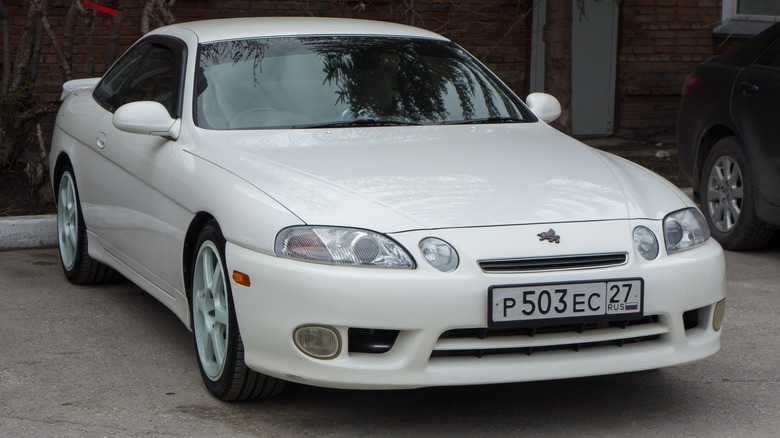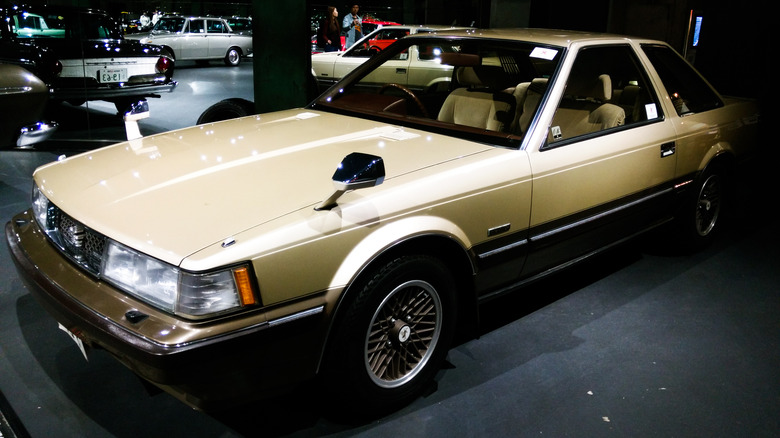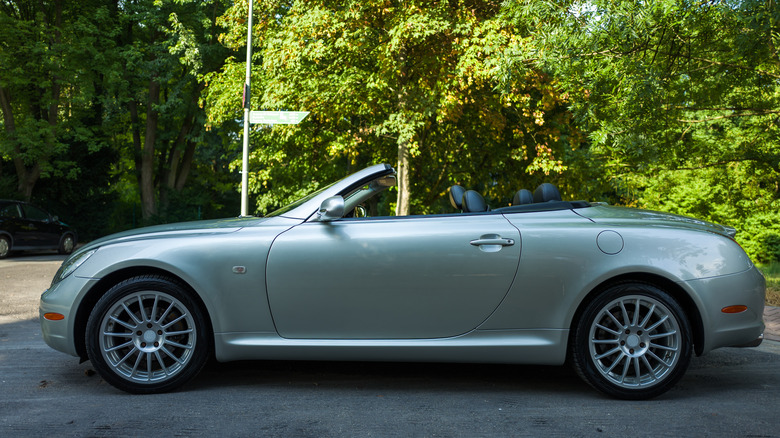Why The Toyota Soarer Was Such An Important JDM Car
When Toyota replaced the Crown Coupe, it introduced the Toyota Soarer in 1981. As soon as it was introduced, it was recognized as Japan's "car of the year" in 1981. It resembled the Toyota Supra, but the selection committee loved it because it was a luxurious car with the latest technology, unlike any other car at the time. It was also a fuel-efficient and a high-performance car — according to Toyota, the name "Soarer" was inspired by a super glider.
Following its success in the Japanese domestic market (JDM), Toyota went on to produce the Soarer for 24 years until it was discontinued in 2005. According to Jerry, the Toyota Soarer outsold its competition in Japan, namely the Mazda Cosmo and Nissan Leopard. Despite its success in Japan, the Toyota Soarer model was never released in North America. However, it played a significant role in accelerating Toyota's dominance in the automotive market. Why was it such an important car?
The Toyota Soarer was a halo car
Ever heard of a halo car? It's basically an exquisite car that is specifically designed to make consumers biased towards other car models made by the same brand. Just like the Supra, the Toyota Soarer matched every description of a halo car — even Toyota claimed it was a "very special" car with better technology than other Toyota cars during its production years.
In fact, Toyota equipped new technology on the Soarer before using it on other car models. For instance, the 1981 Toyota Soarer was the first car in the world to use a 6-cylinder DOHC engine installed with an oil pressure valve lash adjuster. Some of the other notable technology introduced to the 1981 Toyota Soarer included an automatic air-conditioning, and the world's first electronically controlled suspension.
It wasn't done yet –- Toyota introduced the world's first full-color CRT dashboard display in 1985. The CRT display helped the driver to analyze the engine's condition, drive train, and fuel economy –- and if the car was parked, you could use it to watch television programs. Six years later, in 1991, the third-generation Toyota Soarer was unveiled, improved with traction control, automatic rear-wheel steering system, and a 6-inch LCD screen with GPS navigation.
The Lexus SC was Toyota Soarer's twin brother
Following the success of the Lexus LS 400 in the U.S., Toyota sought to replicate that momentum with a luxurious coupe. As a result, the Lexus SC 400 debuted in the U.S. in 1991, two years after the Lexus LS 400 was introduced. The Lexus SC 400 was based on the design of the JDM Toyota Soarer (via Popular Science). In other words, the Soarer and Lexus SC were twin brothers, and they were produced in the same factory by Toyota beginning in March 1989. The Lexus SC 400 used the same V8 engine that was installed in the Lexus LS 400 and the 1991 to 1993 Toyota Soarer.
Similar to the Soarer in Japan, the Lexus SC brand received critical acclaim in the U.S. — the Lexus SC 400 was even named "import car of the year" by MotorTrend in 1992. Another cheaper version of the Toyota Soarer with a smaller engine was introduced to the U.S. in 1992; it was known as the Lexus SC 300.
The Lexus SC lineup wouldn't be complete without a convertible model, and the Lexus SC 430 — which was identical to the JDM Soarer Z40 series — debuted in the U.S. in 2001 (via Autozine). The Lexus SC 430 was fitted with a 300 hp V8 engine and a 5-speed automatic transmission. So, even though the Soarer never made it to U.S. shores, those of us here in the States still got a taste thanks to the Lexus SC lineup.


